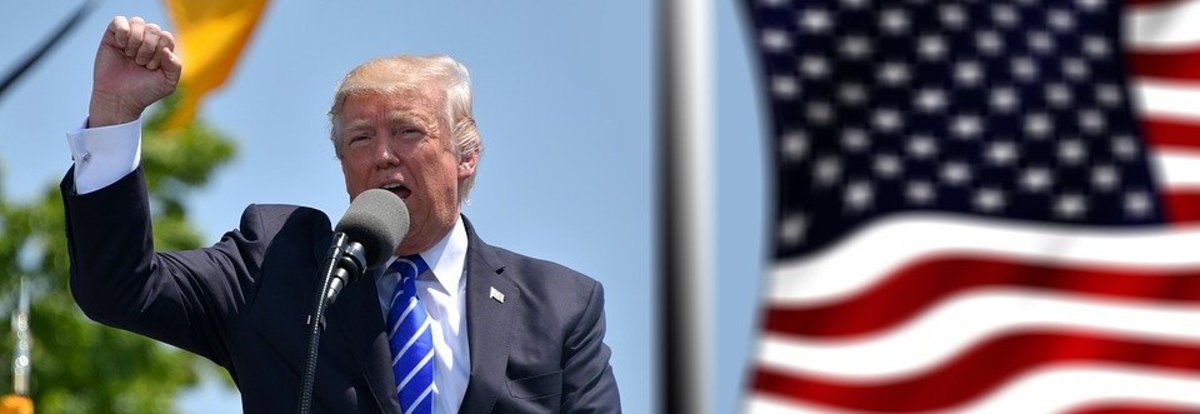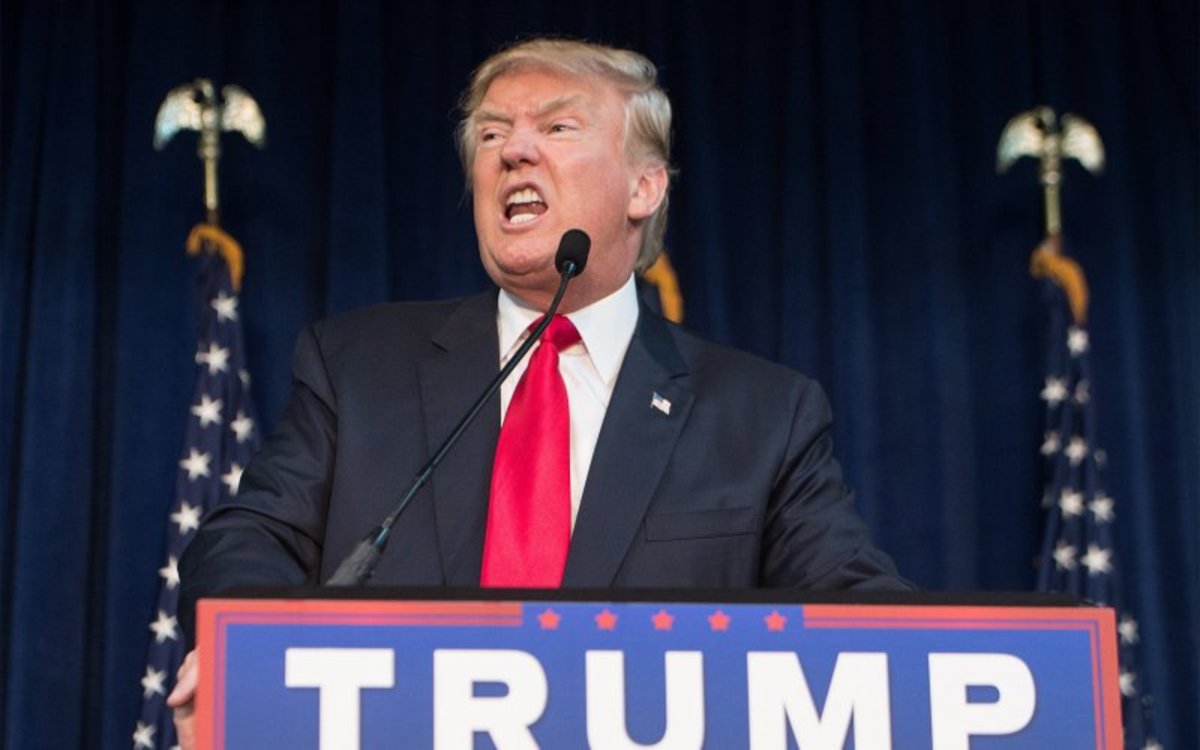Primaries, Delegates, and Voters Oh My!
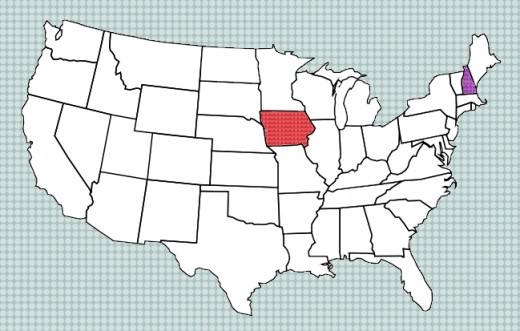
Iowa and New Hampshire
Iowa, located in the American heartland, the only state which has both its eastern and western border as a river, has an agricultural based economy that is shifting to more technology. New Hampshire, one of the original thirteen colonies, located in the New England portion of the upper east coast, was and is currently the birthplace of many famous Americans. These two states could not be more different when compared geographically, climate-wise, economically, or socially. Demographically is another story as both states are over 90% Caucasian, most residents speak American English, and a greater percentage of their populations are Protestant or Catholic. Both states also hold the unique position of being the earliest states to hold primary votes for political office in national elections.
Both the Republican and Democratic parties hold their first formal selection sessions in these two states every four years during the run up to the Presidential election. The states receives massive amounts of media attention and plenty of face to face events with candidates sharing their particular visions for America should they be elected to the highest office. Since 1972 Iowa has been the first state to gather for planning purposes and deciding on their strategies; in 2016 this will take place on February 1st. On February 9th, New Hampshire will follow with their voters making the first primary choices in an open primary. These two states are considered pivotal by candidates since they can test their ideas on real people, polish their public speaking skills, and if they perform very well gather additional financial supporters. Candidates which fare poorly are quickly weeded out and many drop out after the results of these early states are tallied.
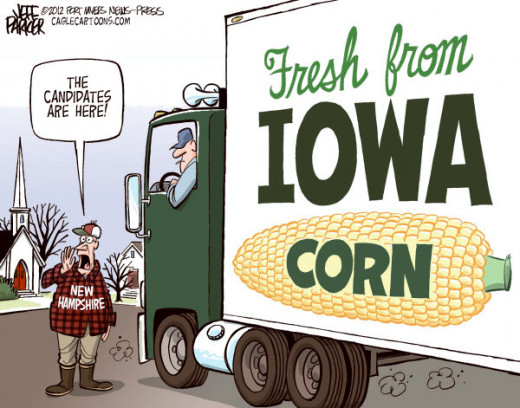
Iowa Caucus [kaw-kuh s]
The Iowa Caucus is quite different than a regular primary election. There are no voting booths but instead gathering places in 1,682 locations across the state where voters come to a town hall type of meeting. The Iowa Caucus does not result in direct selections for the candidates, which gives rise to much confusion around the country. Instead, caucus attendees select delegates which will attend the county conventions, of which there are 99 in the state. Those county delegates gather to elect district and then state delegates who will finally choose the delegates to represent Iowa in the national convention. This process is long and despite the early focus, Iowa actually is one of the last states to choose their delegates.
During the process, the voters do choose a candidate but up until 2014, the results were non-binding. The results for 2016 will be the first time the Republican Iowa Caucus winner will be bound for the national convention. The reason for this change can be shown in an example. Republican delegates were chosen through local and state conventions as usual but in 2012 backers of presidential candidate Ron Paul were the majority. When the Iowa delegation was at the national convention, 22 of its 28 votes went to Ron Paul instead of winner Mitt Romney (Rick Santorum was in a dead heat with Romney, but later dropped out of the race.) Ron Paul came in third in the Iowa caucuses with 21% of the vote but because his supporters were delegates, he got almost 80% of the vote. This was viewed by the Republican leadership as the state leadership trying to put their thoughts ahead of the people who actually made the selection and the new rule was put in place for all states that held caucuses. If they were not binding, they would not be recognized.
Iowa Republican leaders are proposing that the delegate votes are divided proportionately, with the 30 total votes being spread out amongst the winners based on the percent of the vote they received. This would be a very attractive scenario for the crowded Republican field as it would give some lower polling candidates hope and possibly more media coverage going into the New Hampshire primary. Grassroots candidates would not be silenced by the establishment who would prefer a winner take all approach. Iowa and the rest of the states have until October 1st, 2015 to make their final submissions to the Republican National Committee for approval. Unless one of the candidates generates at least 50% of the support in Iowa, the process on how to make the final vote will be laden with hurdles, unless a larger portion of the candidates drop out quickly and their loyalties move to another. Delegates holding votes originally destined for one of those candidates who withdrew could be influential and highly courted by supporters of candidates still left in play. With the Republican National Committee being held in mid-July in Cleveland this year, things could be interesting, especially if no clear choice is evident by then.
Democrats on the other side have a more open caucus than the semi-closed one run by the Republican’s. Their techniques on the other hand are more complex and bewildering to the outsider as they dredge up memories from centuries ago. Voters are expected to stand in designated areas during the caucus which matches up with their preferred choice. During a period of thirty minutes, members from the differing groups try to convince others to leave their areas and come join them. Undecided voters are usually in a central group and are courted by everyone. After this step, the groups are measured and if a group has at least 15% of the attendees, their candidate is considered viable. The process then repeats with only the viable candidates being allowed to have representation and is considered significant by some political scientists as it highlights the importance for voters to have a favorite and a second favorite. They assume that this makes the Iowa voter more informed on the potential candidates. At this point, the process moves along in similar fashion to the Republican approach with district and county and state attendance, but the media and most Americans usually take the results of this day as the direction Iowa is leaning toward. Delegates to each level of convention are initially bound to support their chosen candidate but can later switch, however major shifts are rare and you’d have to look back to 1992 when the winner of the Iowa caucus was not the nominee. Tom Harkin won in a landslide gathering over 70% of the vote, but was bested by Bill Clinton who only received 3% in Iowa but went on to win the nomination and the Presidency.
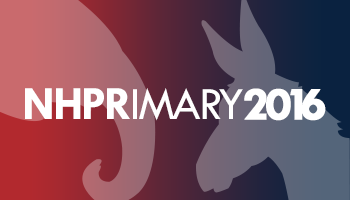
New Hampshire Primary
New Hampshire was originally held the second Tuesday of March pursuant to a clause in the state law (in section RSA 653:9 of the statute book) which gives the Secretary of State the authority to change the date of the primary to ensure it takes place at least seven days before any election similar. Just a note, the Iowa caucus is not considered a similar event since up until the next election the results were non-binding. Other states made attempts to get ahead of New Hampshire in the process, but the state countered and kept moving their date ahead, even going so far as to schedule them on January the 8th in 2008.
The media attention given New Hampshire is coveted by other states yet since 1920 they have held their position. The defense of their retention is often supported with some fact and some innuendo. The small size of the state allows for complete canvassing by all candidates with minimal travel expense. The grass roots candidate can get out into the public and “meet the people” hopefully generating enough interest to springboard their platform to a larger scale in successive states. Poor showings by candidates expected to win have brought about major changes with the most notable being the 1952 Presidential election when incumbent Harry Truman dropped out of the race after losing the New Hampshire Primary to Estes Kefauver, a populist Senator from Tennessee. Party insiders did not like the maverick Kefauver trying to muddy up the waters and instead made a power move at the Democratic Convention, making Adlai Stevenson their nomination for president in 1952 even though he had not campaigned in the primaries. General Dwight D. Eisenhower a Republican from New York carried 39 states in a landslide victory in 1952, perhaps giving Kefauver a small sense of justice.
Another factor which is heavily watched is the fact that the primary in New Hampshire is somewhat open, which means that a person who doesn’t choose to side with one party can still participate, as long as they only cast one vote, of which 40% of the state qualifies. Persons who have committed to party affiliation cannot cross party lines on Election Day. The New Hampshire was the first binding primary and indication of who might be the next President and up until the 1970’s was unchallenged in that position when the Iowa Caucuses began gathering national attention. Voters tended to downplay the caucus because of the process differences, where actual voters by secret ballot chose the candidate of their choice in New Hampshire as compared to the delegate process in Iowa making the choices. But, if we let history be our guide, the results in New Hampshire and their four electoral votes tell us that a win increases a candidate’s share of the total primary vote by more than 25% and second place increases it by about 17%. Only two Republican candidates who lost New Hampshire in the last 30 years went on to become President and three Democrats.
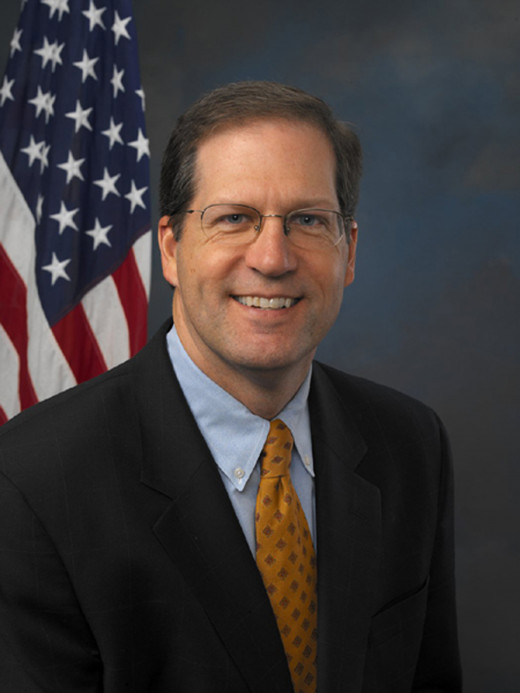
Political Humor
"The people of Iowa pick corn, the people of New Hampshire pick presidents,"
-Governor John H. Sununu in 1988
“Bernie Sanders is now leading Hillary Clinton in New Hampshire. He’s seven points ahead. So forget those emails from when she was secretary of state. I want to see the emails Hillary sent out this morning.”
-Conan O’Brien
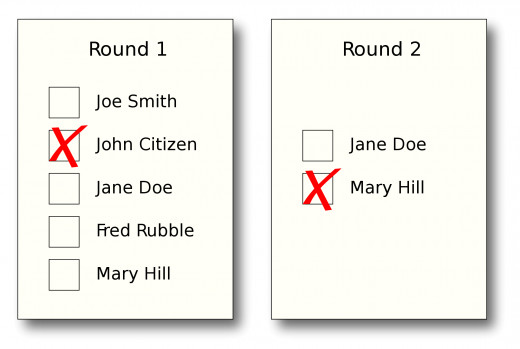
Debate Over the Current System
Many younger voters who may not be as attached to the traditions of the timings of these states as well as many other seasoned voters question the validity and sensibility of allowing it to continue. There are many platforms to review in defending this position, such as the demographics and religious make up of New Hampshire and Iowa in no way mirror the national numbers. Total Population of the United States is about 63% Caucasian, 17% Hispanic, 12% Black, 5% Asian, and the remainder mixed. Religion is broken down with 70% Christian, 16% No Religious Affiliation, 6% Jewish, Muslim, Hindu, Buddhist, and the balance being other faiths or atheist.
Another group looks at the states themselves and can point to policies and how these two states influence the overall field by highlighting certain topics important to that particular state. Iowa being an agricultural state would almost certainly ask the candidates their opinion on farm related topics and voters of New Hampshire might focus on hurricane preparedness or gridlock in the transportation system. The media would in turn springboard these topics into news stories and they would become national news in days, thus influencing the overall process and maybe even the debates. What about the needs of Georgia or North Dakota – they would need to spend countless hours and dollars to get coverage at those levels. It reeks of unbalance, despite the constant preaching of New Hampshire citizens who claim they are the quintessential balanced playing field for politics.
Perhaps we should have them simultaneously, and give no state an advantage. This process has merits but one glaring hole, and that is that no candidate could win a majority in a crowded field year such as we are currently seeing on the Republican side. We need to proceed on a state by state of block of states process to reduce the number of candidates. Another big factor is the money portion of the race. There are not enough political funds for every candidate to stage a national strategy unless you are a billionaire like Donald Trump. Also the respective National Committees of both parties would be unable to get behind any one candidate without getting behind them all, virtually eliminating their influence from the process. Many people would comment that the last point might be the best thing that could happen in American politics as the “establishment” tends to try to overshadow the will of the people.
The two states which come after the early ones are South Carolina and Nevada and when combined the four states seemingly give a representation of the nation – South, West, Midwest, Northeast. This was by design and so candidates could compete financially and because they had smaller populations that could be courted in a more intimate setting across the smaller venues of the state. Imagine if California, Florida, Texas, and Ohio were the leading states – well financed establishment candidates would have little resistance and be able to eliminate any grassroots candidate with ease.
Some citizens might feel slighted if their state falls near the end of the selection process, when in many cases the nominations are all but made. Logic would say that if a candidate whom they wanted was unable to weather the storms of the previous states, they most likely would not receive enough votes to win the Presidency, so it isn’t really a loss. Also, those later states in many cases serve to fine tune and really separate the candidates. Fewer people means more time to talk about the broader spectrum of ideas and policies they hope to put in place.
Pathway to The Oval Office
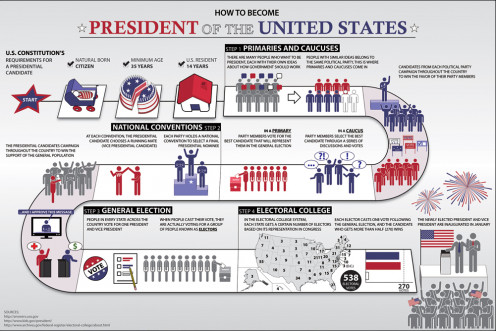
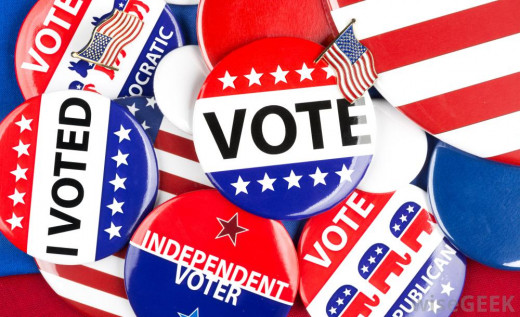
Primary or Caucus ?
Also up for debate are the different processes, with sides forming on whether caucuses are better than primaries, should primaries be opened or closed and what ramifications can arise. Take for example the Mississippi primary in 2014, when Republican incumbent Thad Cochran broke about every rule of politics in his run-off election victory over state Senator Chris McDaniel in an open primary. When a Republican candidate can “convince” Democrats to vote for them in an open primary, it really goes against the will of Republican voters, but that’s exactly what happened. New York has one of the strictest closed primaries in which voters must commit to almost a year in advance. And many wonder if a closed primary is even constitutional, so far that they have been challenged in the court system. Unfortunately the Supreme Court upheld the closed primary as being allowable despite the arguments made that people should not be forced to declare loyalty for a party in order to vote. States using a caucus depend on representative decision making and can be hoodwinked as we have seen from earlier examples.
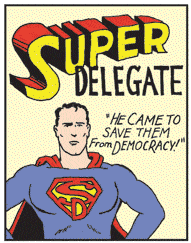
Delegates and Superdelegates
Then still the topic of how delegates are awarded, with some states being winner take all and others based on percentages of votes received. These pledged votes are not the whole picture because they only represent a portion of the total votes needed to advance a candidate to the Presidential election level. Each state starts with ten delegates but that number climbs depending on a mountain of other factors based on if their state legislature is of the party, their governor, and many other bonuses. Some states could have over 150 delegates once they are finished counting. Another addition is the Superdelegates, who get automatic entry into the convention and have a vote in the final determination. These are usually former or current party leaders and number close to 120 for the Republicans and almost 800 in the Democratic Party. Many people who are following the current primaries use the number of Superdelegates supposedly already primed to vote for Hillary Clinton as a major hurdle for another candidate to jump even if they outperform her at state level.
Superdelegates were added in 1980 to insure that party leadership could get into their respective conventions and secondly to insure that the “establishment” had enough clout to steer the events and insure a candidate that they blessed would go to the next level. The high number of Democratic Superdelegates makes many voters uneasy and they feel that the party tramples on their will by exercising such a high level of controlling influence. Yet, to this day, Superdelegates have always supported the frontrunner who actually won the majority in the primaries and caucuses.
Summary
Looking at the different scenarios and the different strategies on how state politics are executed, it’s clear that the debate might never be settled and we’ll always get dissention on when, who, and why we do the things we do. As of last week, 45 of the 50 states have scheduled their respective primaries with Idaho, North Dakota, Maine, Wyoming, and Washington still working on it. So the next time you hear someone mention “Super Tuesday” and the fact that 13 states will be making their choices on that day, maybe you’ll think of your own strategy to make our primary system better. I can leave you with one important fact that will help soften the complicated field I’ve briefly covered. The states hold the power to decide when and how they have primaries or caucuses and how the delegates will be divided
In Closing
First, thanks for taking time to read this lengthy look at the earliest stages of our election process. Notwithstanding a natural disaster, this will happen starting early next year and we'll be on our way to electing a new President in November. Any comments are welcome and I always approve them unless they are un-civil. I have my opinions and I'm sure many others do as well - post them if you wish - maybe yours is the next best thing. If you are from Iowa, I'd love to have you fact-check my section on the caucus to insure I've got it all correct.


